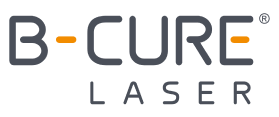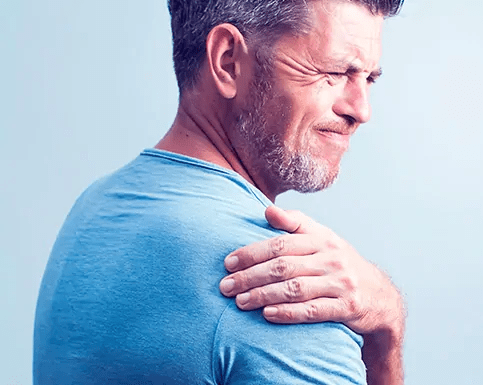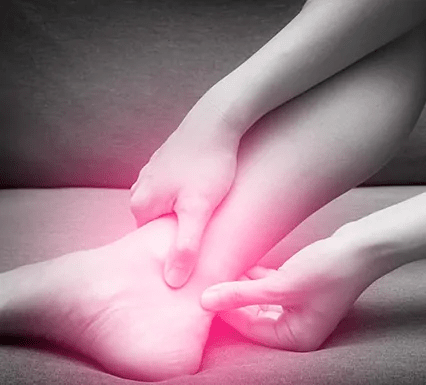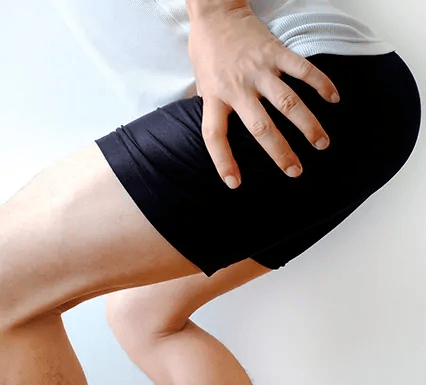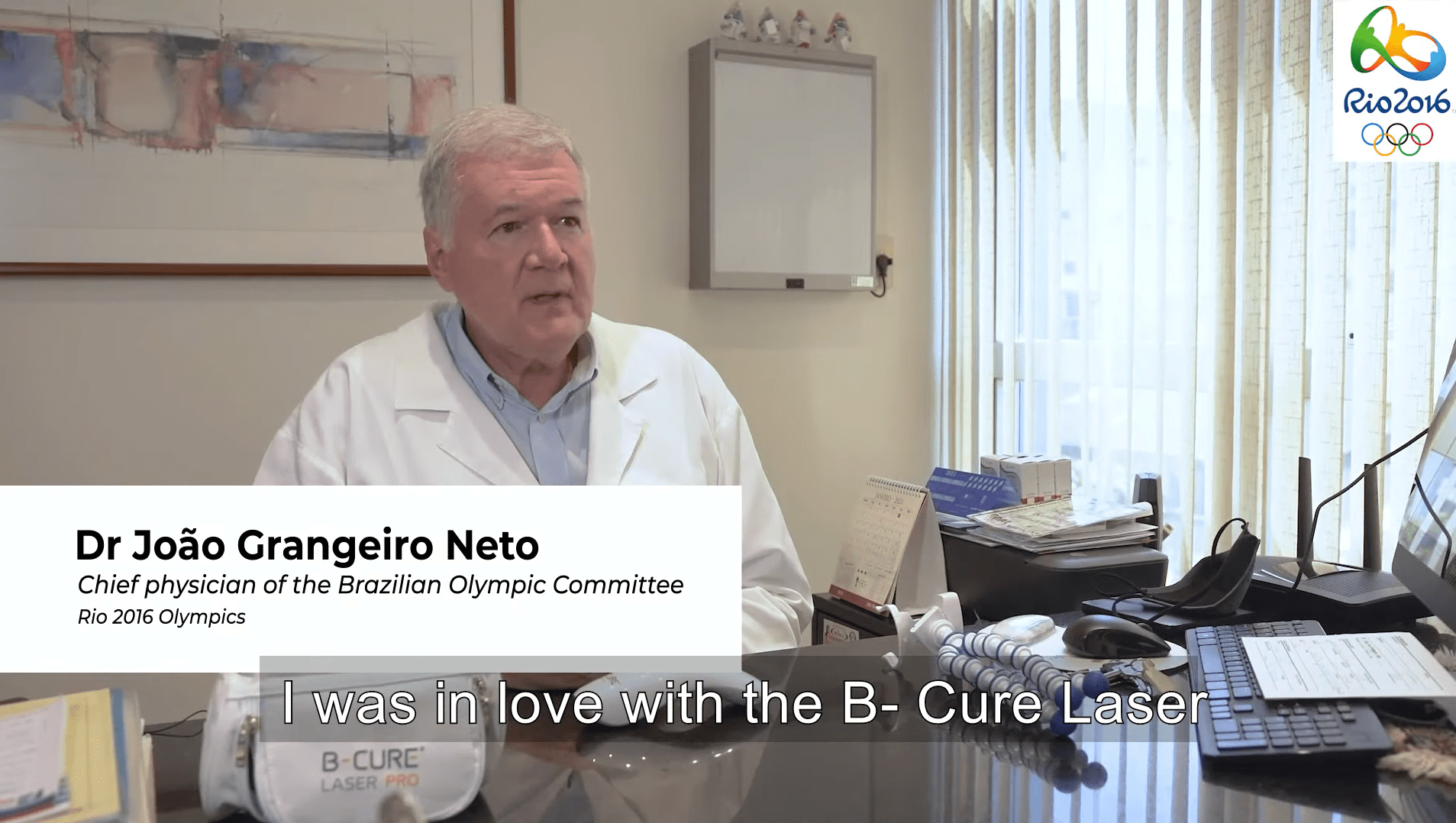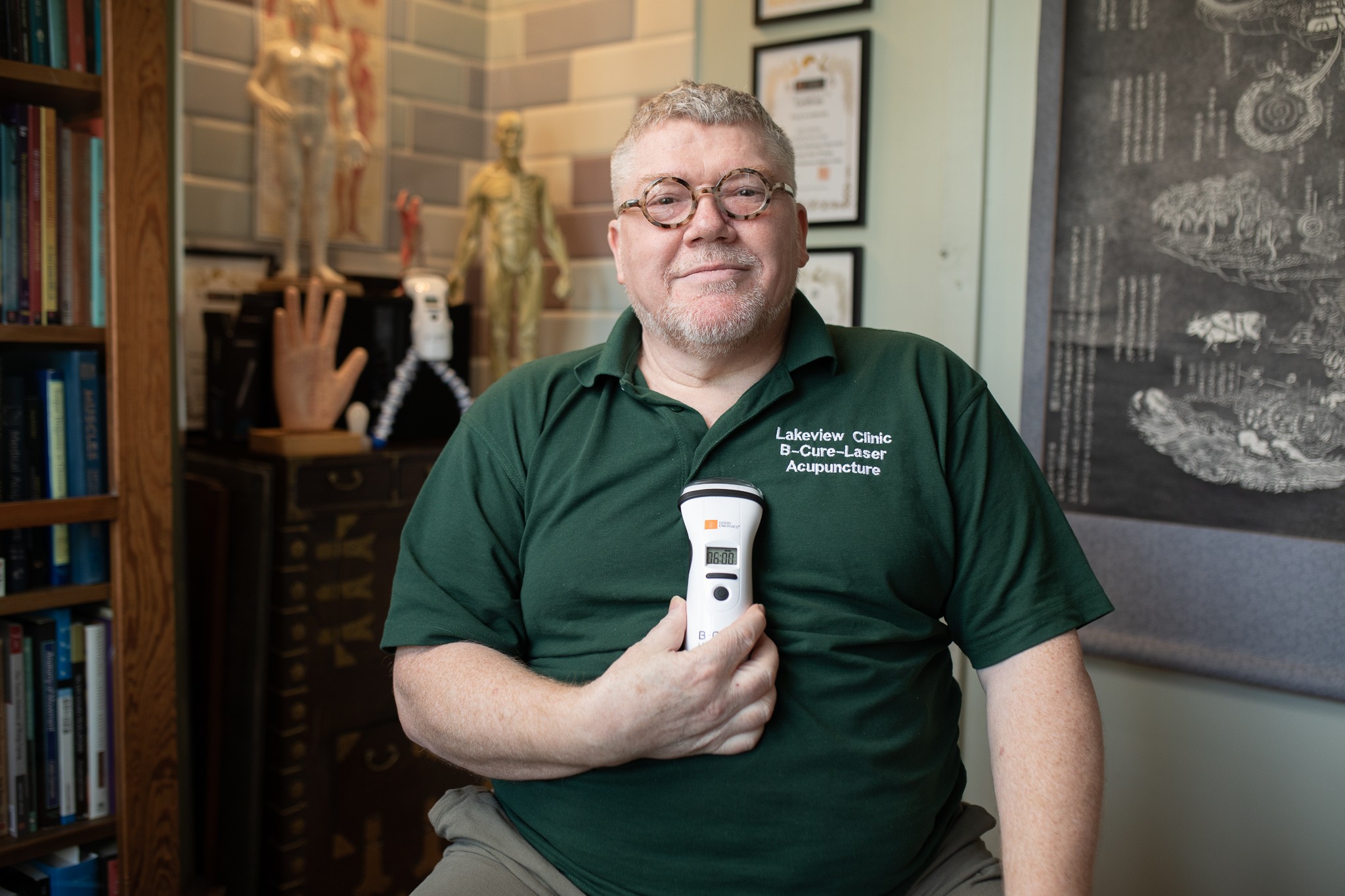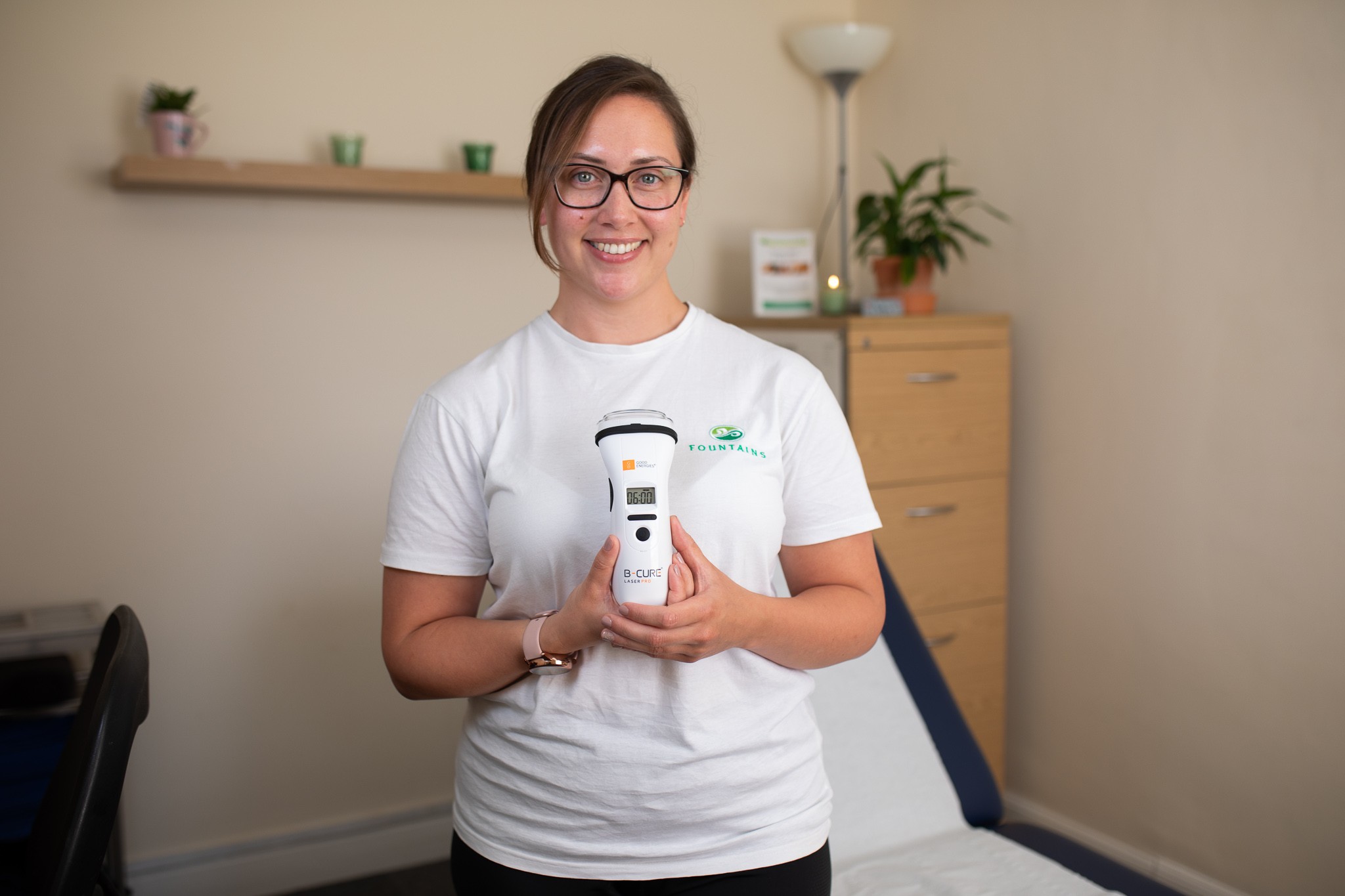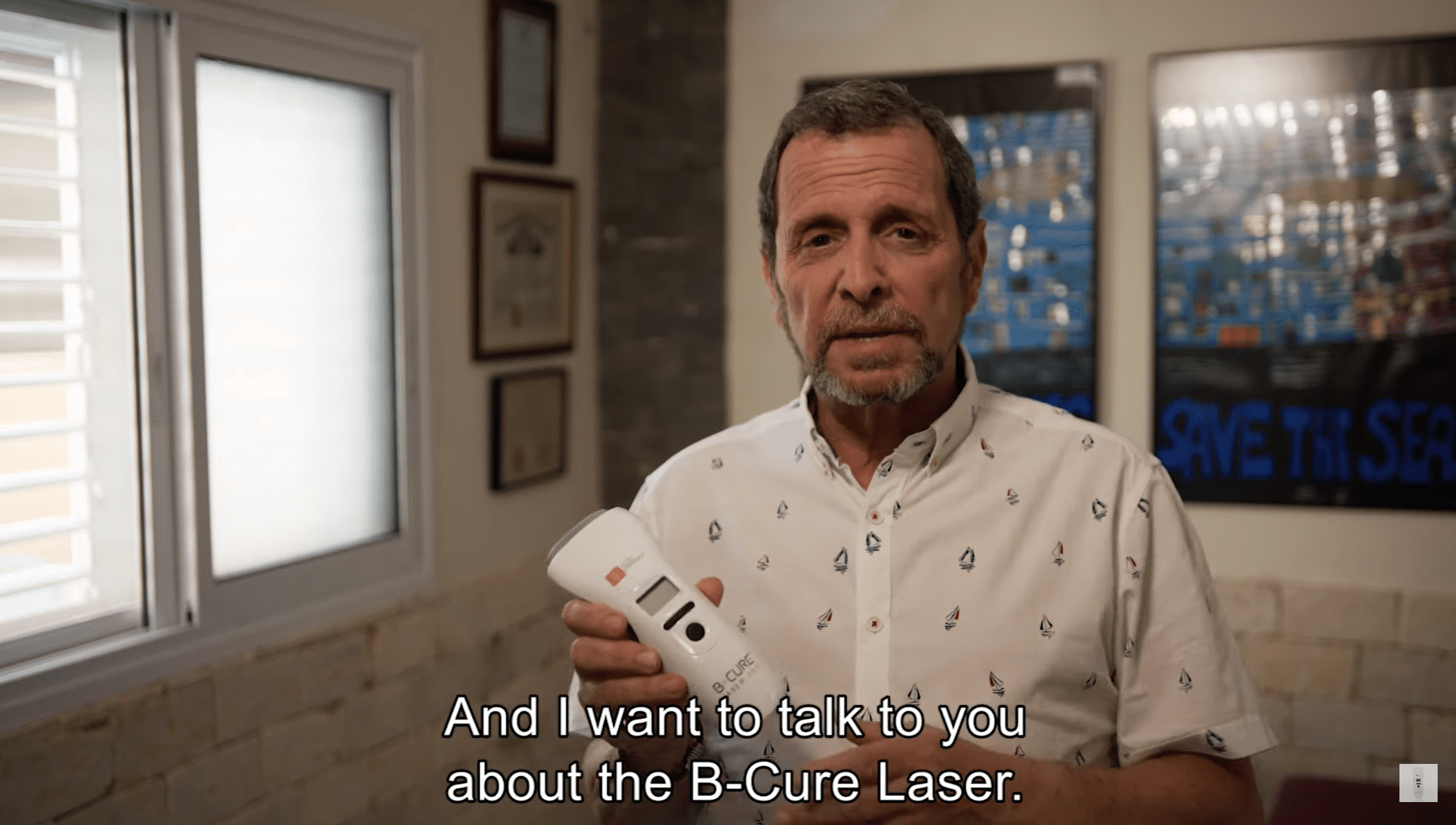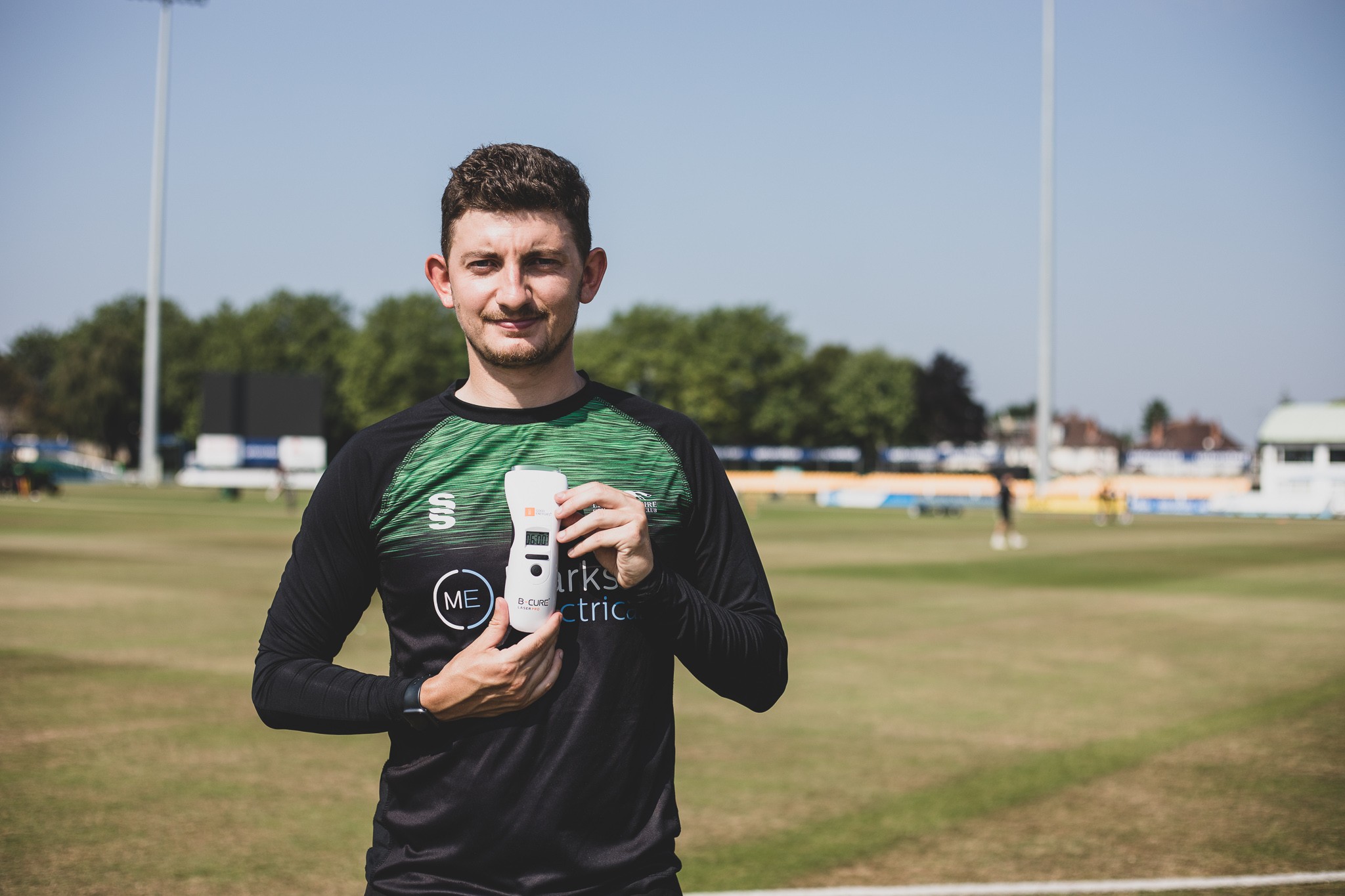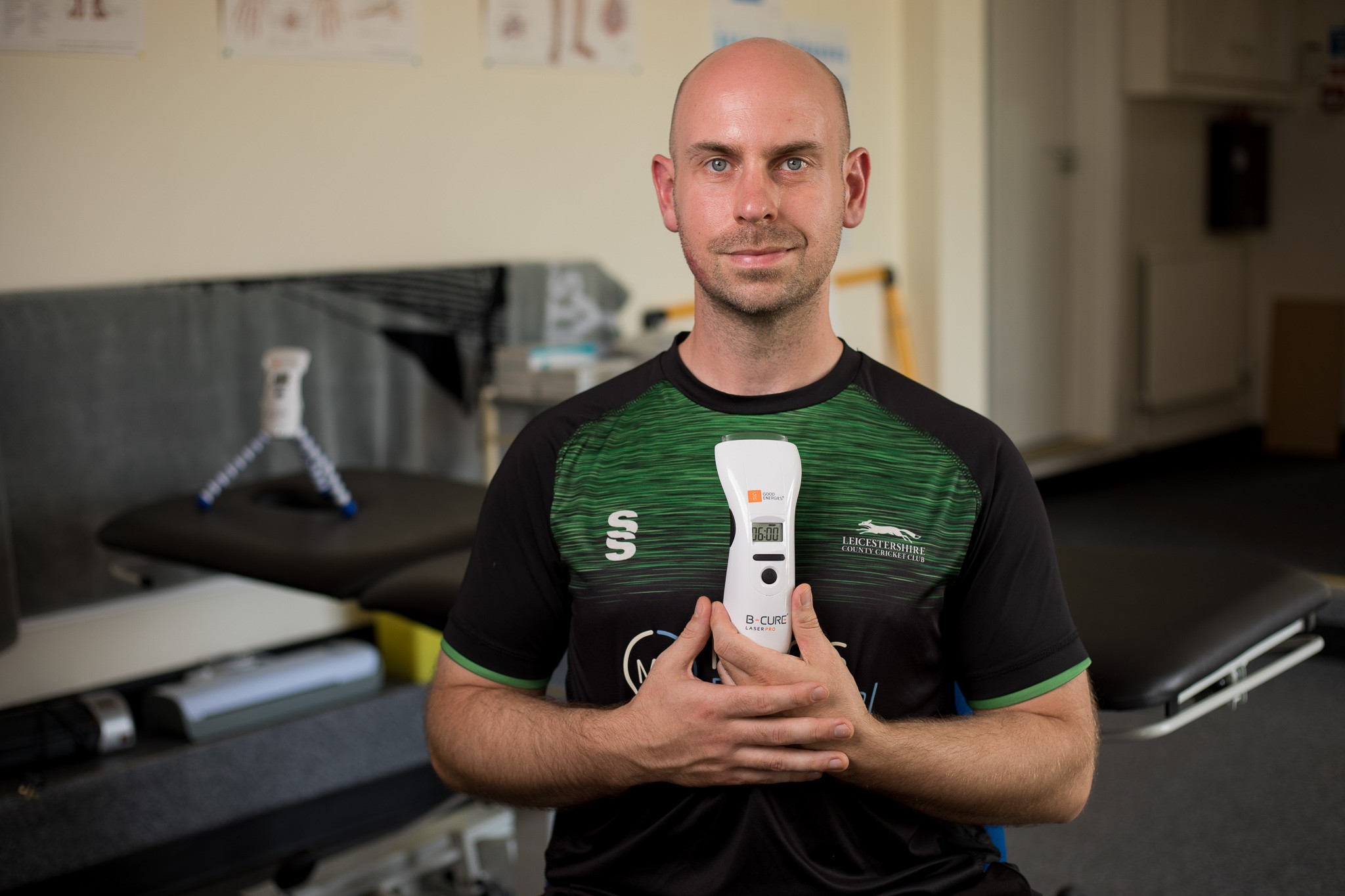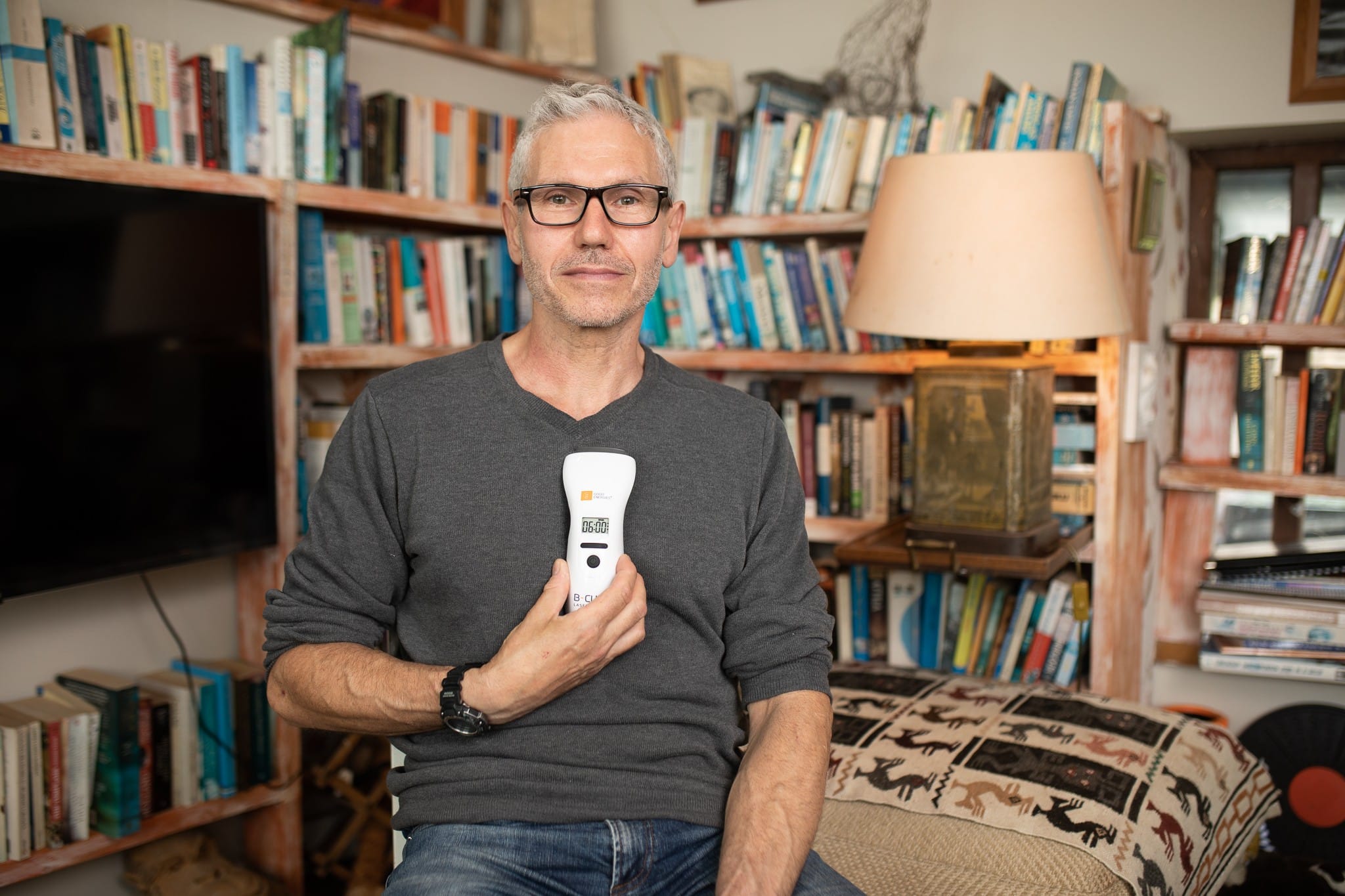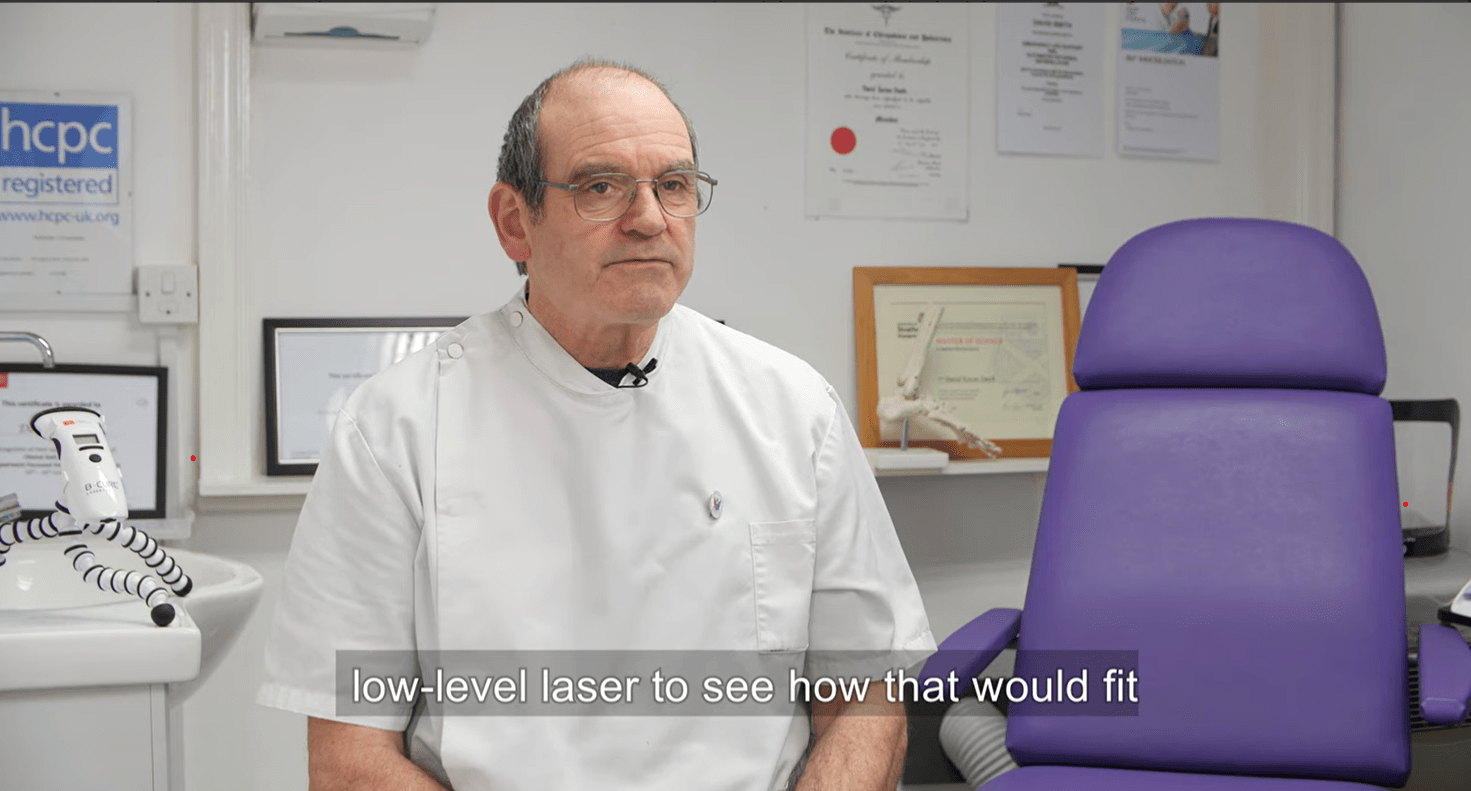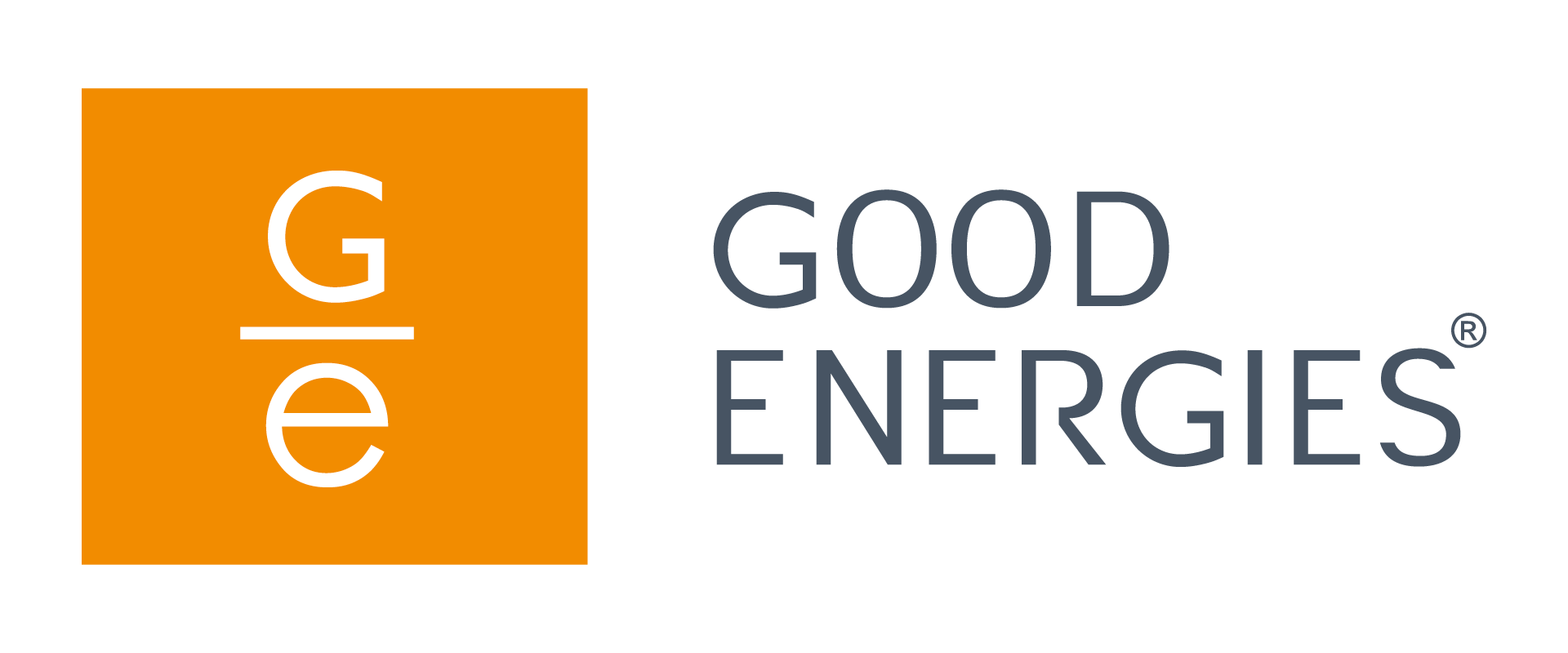Understanding Upper Back Pain: Causes and Solutions
Upper back pain, originating from the thoracic spine, is a common issue that can disrupt daily activities and diminish quality of life. Located between the base of the neck and the ribcage, the thoracic spine comprises 12 vertebrae that provide stability, anchor the ribcage, and protect vital organs in the chest. Pain in this area can result from a range of causes, but effective solutions like the B-Cure Laser offer a pathway to relief.
What Causes Upper Back Pain?
Upper back pain often arises from:
- Poor Posture: Slouching or prolonged sitting can strain the upper back muscles.
- Muscle Overuse: Repeated motions or heavy lifting can lead to muscle fatigue.
- Trauma or Injury: Joint dysfunction, herniated discs, or pinched nerves may cause sharp or persistent pain.
- Medical Conditions: Osteoarthritis, myofascial pain, or even infections can affect the thoracic spine.
Pain in the upper back is frequently described as a burning or pulling sensation localized to a specific spot. If untreated, it can progress to stiffness and restricted mobility, impacting daily routines.
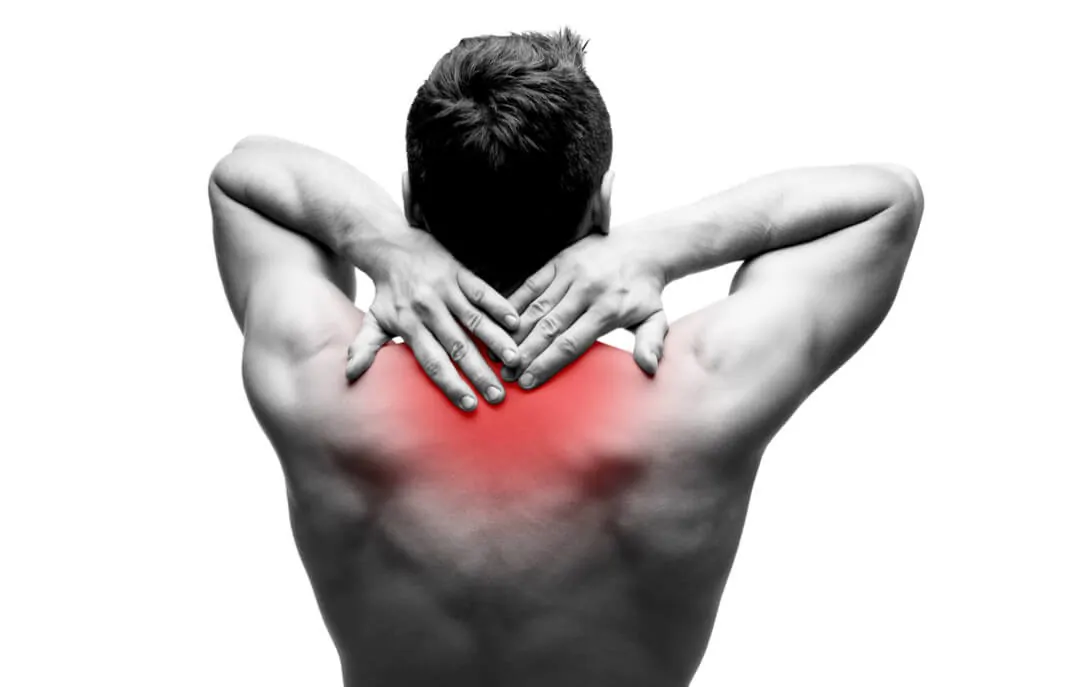
How to Self-Treat Upper Back Pain
If the pain isn’t caused by an injury, you can take several steps at home:
- Rest and Modify Movements: Avoid activities that exacerbate pain, but don’t rest excessively, as it may weaken muscles.
- Use Over-the-Counter Remedies: Pain-relief creams and medications can provide temporary relief.
- Massage: Relaxes tight muscles and promotes blood flow to the affected area.
However, these methods may not address the underlying causes. For persistent pain, advanced treatments like the B-Cure Laser offer significant benefits.
The B-Cure Laser: A Breakthrough for Upper Back Pain Relief
The B-Cure Laser is a lightweight, portable device designed for safe, non-invasive treatment at home. It utilizes low-level laser therapy (LLLT) to reduce pain, accelerate healing, and enhance cellular function.
How the B-Cure Laser Works
The B-Cure Laser emits a monochromatic laser beam with a precisely defined wavelength. This coherent beam moves in one phase and one direction, penetrating deeply into tissues to stimulate cellular repair and accelerate healing. Unlike traditional methods, B-Cure Laser focuses on photochemical effects rather than generating heat, ensuring a safe and comfortable treatment experience.
- Stimulates the production of ATP (adenosine triphosphate) to fuel cellular repair.
- Improves blood circulation and lymphatic drainage, reducing inflammation.
- Promotes collagen production and protein synthesis, aiding tissue recovery.
Studies have demonstrated that the B-Cure Laser delivers clinic-grade results, helping patients recover from muscular, skeletal, and nerve injuries more effectively.
Benefits of the B-Cure Laser
- Reduces chronic pain with regular use.
- Non-invasive and suitable for all ages.
- Easy to use and safe for at-home treatment.
- Proven effectiveness with no known side effects.
Treatment Protocol for Upper Back Pain
To target upper back pain effectively:
- Treat each painful vertebra along the spine for 8 minutes.
- Focus on the areas around the right and left scapula, treating each spot for 8 minutes.
- Use an adjustable stand to stabilize the device for deeper penetration and consistent application.
For optimal results, repeat the treatment twice daily. Many users report noticeable relief within days.
Why Choose the B-Cure Laser?
The B-Cure Laser stands out for its ability to combine clinical-grade technology with the convenience of home use. Its patented 4.5 cm² beam effectively treats a wide range of conditions, making it a versatile solution for those seeking non-invasive, drug-free pain relief.
Regain your mobility and improve your quality of life with the B-Cure Laser – a proven and safe approach to managing upper back pain.
To learn more about other health conditions that the B-Cure Laser can help manage, please visit our Treatment Guide page.
